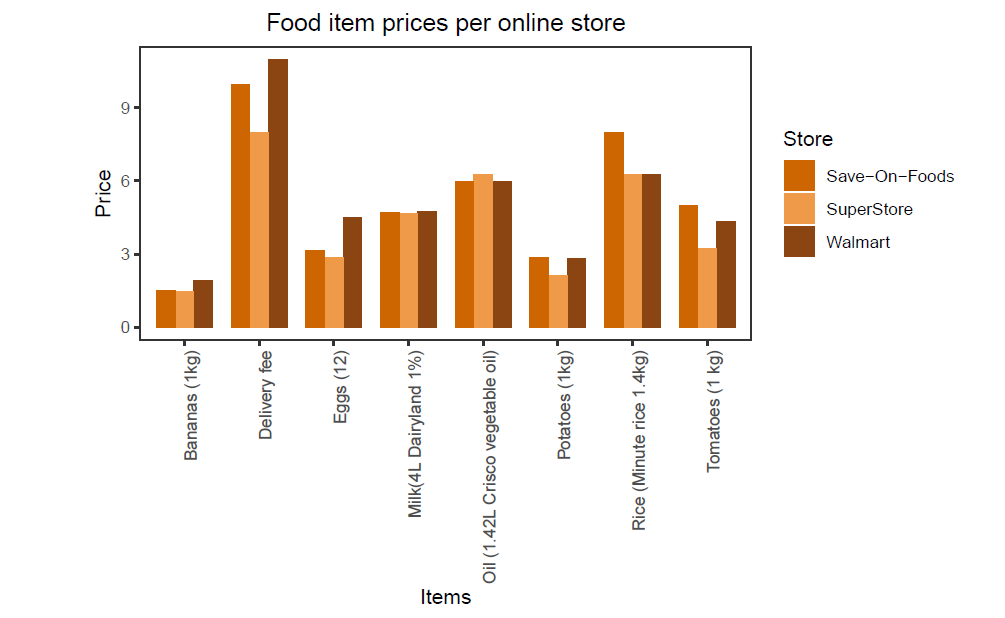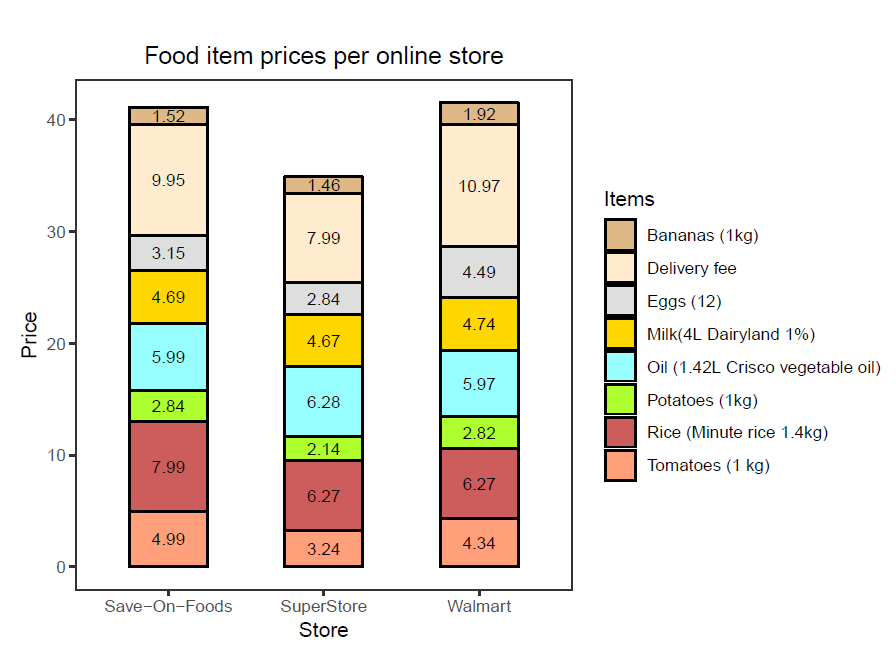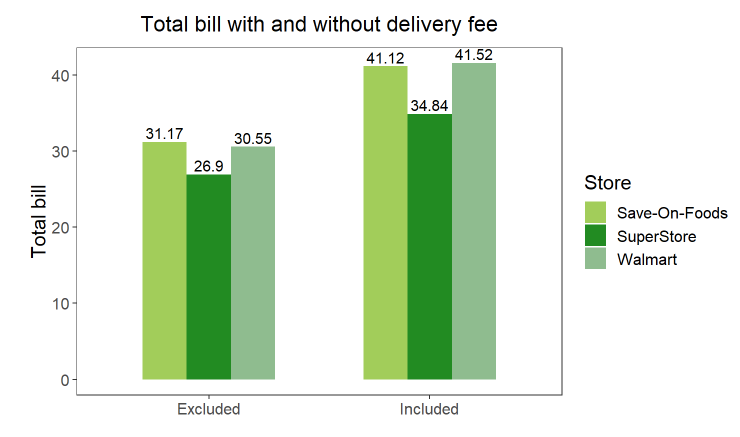I've always wished I was one of those who enjoy grocery shopping, but I really don't. This is due to three main reasons: First, when I look at my busy calendar, I can't help but feel as if the time I allocate to grocery shopping could be used to do something more productive such as working on an assignment, catching up with a relative or even just sleeping. Secondly, I always end up spending more time than planned because I rarely find the correct aisle on the first try and when I finally do, I get confused by all the options. Lastly, I'm very good at overestimating the amount of groceries I can carry, hence going home is often a struggle.
In view of the upcoming winter and school assignments becoming more and more time-consuming, I've decided to explore online grocery shopping. My goals in doing so were to save time, minimize the amount of effort it takes to carry groceries and of course save money by finding the cheapest online store.
I first researched all stores with an online presence and same-day delivery services. My delivery fee budget was at most $15 (significantly lower than the dollar value I would put on the time I spend in grocery stores weekly). In addition, I did not want any additional restrictions such as a minimum order value. Below is a summary of my findings:

As you can see from the above table, my options were quickly reduced to 3 stores : Save-On-Foods, SuperStore, and Walmart. Then,
I picked 7 fod items I ususally purchase and looked up their prices on the stores websites.
The below graphs show bananas, eggs, milk, tomatoes, rice, potatoes, and oil prices accross the 3 stores as well as delivery fee.


Did I hear SuperStore is the cheapest? Correct! All products are cheaper at SuperStore but oil. If I were to purchase these 7 items, my total bill before tax would be $34.84 at SuperStore, $41.12 at Save-On-Foods and $41.52 at Walmart. SuperStore is about $6.68 and $6.28 cheaper than Walmart and Save-On-Foods, respectively. However, when the delivery fee is excluded the price gaps shrink and Walmart becomes more competitive than Save-On-Foods. Then, Superstore is $3.65 cheaper than Walmart and $4.27 cheaper than Save-On-Foods.
This means that assuming online prices are a reasonable proxy for in-store prices, Walmart is a cheaper option than Save-On-Foods as far as in-store shopping is concerned.

This analysis has two main limitations. First, a robust analysis requires more than 7 products. Secondly, I chose specific brands instead of an average price per item. This means that the findings may suffer from sampling bias and an analysis conducted with different brands and/or quantities could yield different results.
All things equal, I will be shopping at Superstore online very soon !